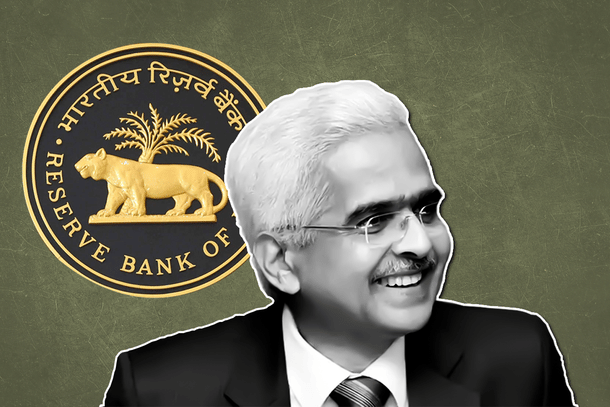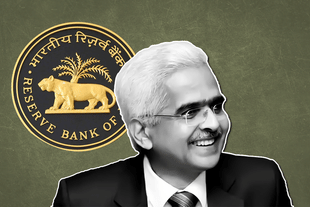Economy
The RBI Governor Has Delivered A Message To Banks — ‘Lend’; It Is Critical For Economic Recovery
Karan Bhasin
Apr 19, 2020, 04:59 PM | Updated 05:40 PM IST
Save & read from anywhere!
Bookmark stories for easy access on any device or the Swarajya app.


The Governor of the Reserve Bank of India, Shaktikanta Das, made a series of announcements on Friday, which included further Long-Term Repo Operations (LTROs), reverse repo cuts and other sets of announcements that focussed on boosting liquidity.
It is important to put things in perspective on the announcements that have been made and on what it means for businesses going forward.
Indeed, there’s system liquidity in the sense that banks have adequate cash available to lend, yet that lending has not happened. This was the case even before Coronavirus – however, going forward, this must not be the case.
One of the reasons why banks have been reluctant to lend has been risk aversion, that is, they are scared of defaults and consequently, they’ve been reluctant to lend over the last couple of months.
Prudent banking further mandates them to avoid lending as they foresee a decline in income of companies going forward due to weaker economic activity.
However, banks’ inability to lend at such a time can act as a key catalyst in worsening the situation as medium and small enterprises would find it difficult to find adequate working capital.
The lockdown and the consequent mismatch in earnings versus expenses, especially the fixed liabilities, would have eroded a major chunk of cash and retained earnings of several of these companies – therefore, they’d need capital infusion and this capital infusion needs to be cheap to ensure quick recovery.
All these factors make the announcement made by the RBI Governor important for business owners as they face severe uncertainty regarding their future and may require finance from banks in order to restart their businesses.
The measures announced by the Governor were focussed on giving a strict message to banks – that is, to lend. The cut in reverse repo rate is important for precisely this purpose, even though the cut was, at best, modest.
For those wondering, reverse repo rate is the rate at which the bank lends money to the Reserve Bank of India. That is, when banks have additional capital (money that hasn’t been lent yet), they simply park it with the Reserve Bank of India and get a rate of interest (reverse repo rate) on their deposits.
Over the last few months, we’ve had banks use the reverse repo facility frequently to park their money with the RBI rather than to lend it outside.
This is important as banks would make a higher return by lending it to others, but they have been reluctant as they are scared to risk defaults.
The reverse repo cut, therefore, is an important measure to encourage banks to lend.
However, the cut was too small to have an impact at the moment and banks may continue to lend to big corporate houses, the government and the RBI.
More such rate cuts should be expected going forward and the Governor had indicated the same in his announcement as inflation is likely to remain in control.
The key issue here is that bank lending tends to be counter-cyclical, that is, in good times, they lend more and in bad times, they lend less.
This, in turn, amplifies the boom years, and consequently, deepens the bust cycles.
Unfortunately, the present crisis is unlike a regular bust cycle and, therefore, banks will have to take on some of the risks associated with lending to businesses even if it means some of the loans could turn non-performing in the immediate future.
Luckily, India’s public sector banks can be instrumental in driving the flow of credit, especially to Micro, Small and Medium Enterprises (MSMEs), which will find it difficult to raise capital in such an environment.
The next question is whether this would result in more NPAs or risky lending or banking frauds. Yes, some of it is possible, however, a moderate relaxation in collateral requirements across the board without discretion can limit the scope of frauds.
There are only two options available at the moment, first is to drive credit which will help firms survive the COVID – 19 stress (and reduce NPAs due to regulatory forbearance, etc) or to further squeeze the flow of credit, which will definitely increase NPAs and push companies out of business.
Clearly, the former is the only feasible choice available and therefore, banks, especially PSBs will have to play a major role in the prospects of our economic recovery.





